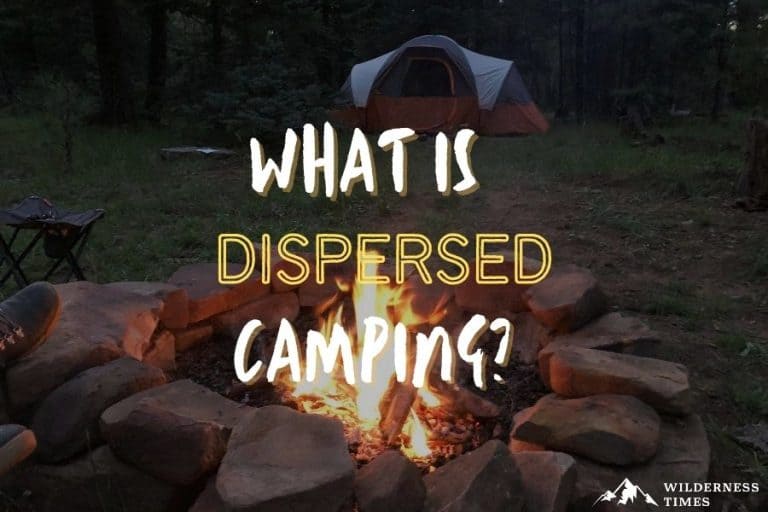Tired of paying your hard-earned money to secure a camp spot?
Well, you can always go and choose one yourself…for FREE!
How, you ask? Dispersed camping is the answer!
You get to pick your own spot and enjoy nature all to yourself.
Sure, dispersed camping does come with certain rules and regulations, but we’ll cover all of that today.
So let’s dive into our guide!
Also Read: 18 Tips for Camping On a Budget.
What Is Dispersed Camping?
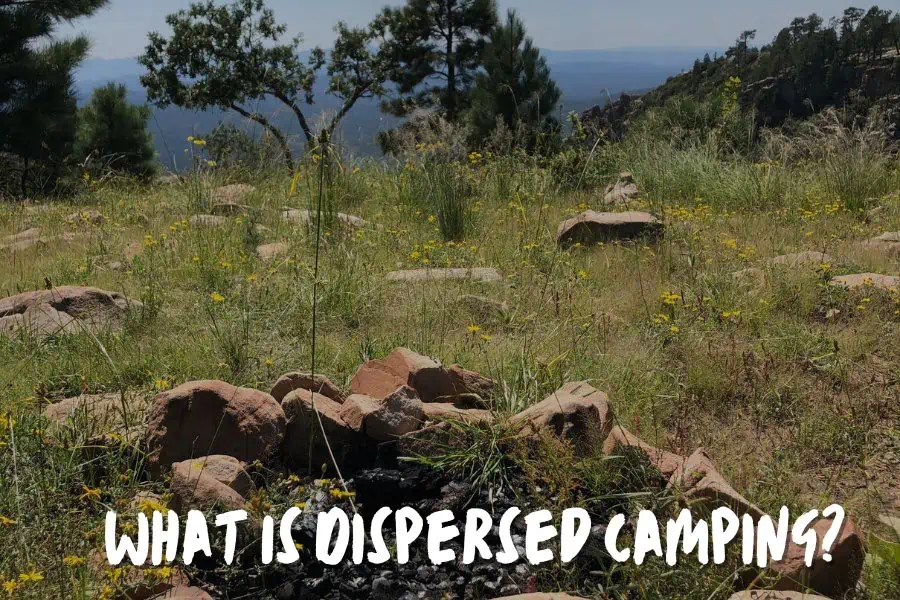
First things first, let’s talk about the definition of dispersed camping.
Basically, dispersed camping is camping outside of a designated campground area.
In other words, it means you’re camping on a site without developed camping facilities.
So – no services you’re typically used to are available, like toilets, picnic tables, fire pits, etc.
A commonly used dispersed campsite may have a man-made fire pit, but that is about it!
At the same time, dispersed camping also means no reservations or campground fees.
Instead, you just drive up the access road to a pullout and find a place suitable for pitching your tent or parking your RV.
Still, even dispersed camping is subjected to certain rules and regulations, and we’ll get into them in a little bit.
How to Prepare for Dispersed Camping?
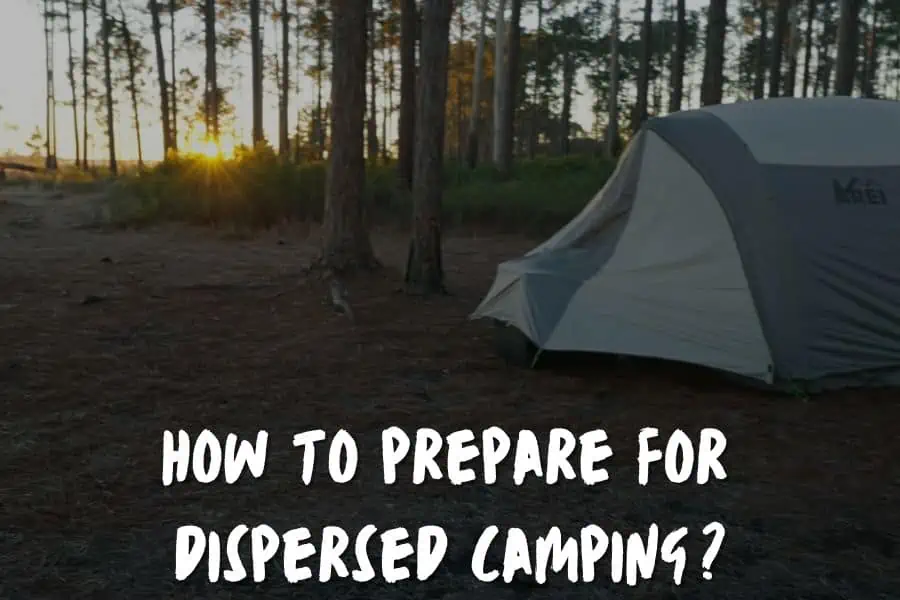
Given that you can’t reserve your spot in advance or pay for it, you might think that dispersed camping requires absolutely no preparation.
However, things aren’t that simple. It’s true that dispersed camping offers a bit of flexibility when it comes to choosing a camping spot.
Still, that doesn’t mean you can just shut your eyes and point a finger at the map and go there.
In the next section, we’ll go into detail about what places you can camp at.
Some may require special permits while others don’t. That’s something you need to research before heading out.
During certain times of the year, special restrictions may apply depending on the weather conditions.
During warm summer months, certain areas might have fire bans in place.
If unsure whether there are any restrictions in the area you plan on camping at, you can always contact a ranger station to find out the most recent information.
Since you’ll be camping in a remote area with little to no services, always be prepared for the unexpected.
Phone reception might be bad or nonexistent. Pack a printed map to use in case you can’t rely on your phone’s GPS.
Forest roads may also not be in great condition getting to your campsite, so make sure that your vehicle is up to the task of driving over rocks, pebbles, mud, dirt, puddles, debrit, and potentially snow.
Not sure whether you’ll find a store by the road to stock up on things? Pack extra food and water.
You might want to have a water filtration system available, in case you plan on staying longer.
Also See: How To Purify Water In The Wild – A Survival Guide
Where Can You Do Dispersed Camping?
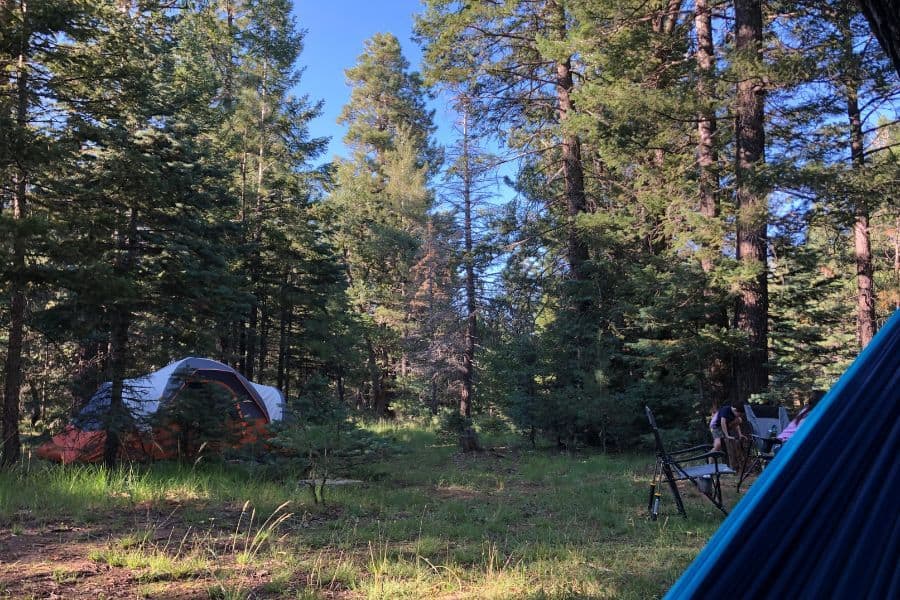
As we already established, dispersed camping means camping outside of a designated location.
But that doesn’t mean you can set up your site anywhere that isn’t considered a campground.
For dispersed camping, you actually have several options when it comes to locations, although they all have their own rules and regulations:
- National Forests
- Bureau of Land Management (BLM)
- Wildlife Management Areas (WMA)
- National Grasslands
Now we’ll go through each and their respective do’s and don’ts.
National Forests
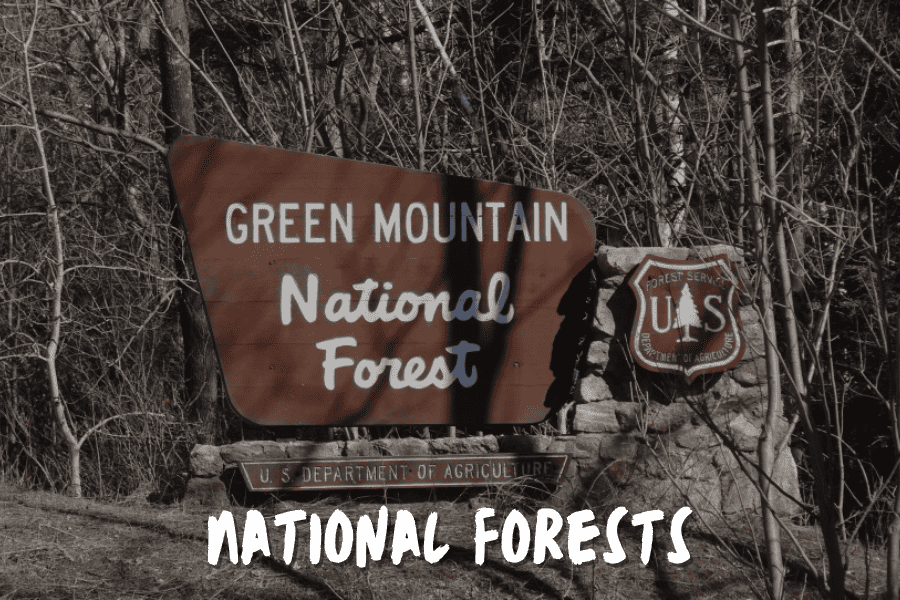
In the US, there are 154 national forests, which are areas under the protection and management of the United States Forest Service, which is the division of the Department of Agriculture.
Legally speaking, you can camp in any spot of a national forest, as long as it’s not in the vicinity of developed recreation areas like campgrounds and trailheads.
This means that, as long as you’re at least a one-mile perimeter away from those developed areas, you’re fine.
However, you also need to be at least 100 feet away from any water source.
Finally, keep your campsite no more than 150 feet away from a roadway, to prevent damaging natural resources inside the forests.
Now, as far as the length of your stay goes, National Forests aren’t very restrictive.
You can camp for up to 16 days at a single spot, after which you need to move your campsite at least 5 road miles from the original location.
Furthermore, can’t spend more than 16 days of any 30-day period in the same, 20-mile radius area.
While this means you often have to move your campsite, you can actually camp all year long in the same national forest.
Bureau of Land Management (BLM)
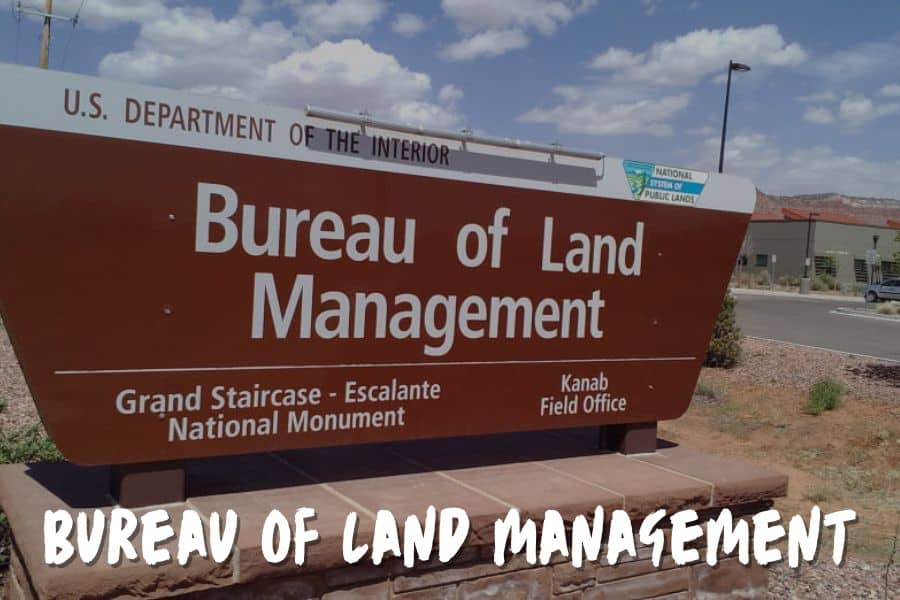
BLM, or the Bureau of Land Management, is an agency within the US Department of the Interior.
BML covers 247.3 million acres, which translates into ⅛ of the country’s landmass.
Unless stated otherwise, most BLM areas are open to dispersed camping.
However, you should always be safe and check with the local office if there aren’t any restrictions in place regarding the area you plan on camping at.
In some cases, you might even have to attain a permit to camp at a specific place.
When it comes to choosing the spot, standard rules apply.
Stay away from the water sources, try using a spot that was previously camped on, and don’t drive your car off of established roads.
As for the length of the stay, you’re allowed to camp on BLM land for a total of 14 days within a consecutive 28-day period.
In addition to that, you’re not allowed to leave your stuff unattended (in other words, your campsite) for more than 10 days.
This rule is different in Alaska, where you can leave your camp unattended for up to 12 months!
Wildlife Management Areas (WMA)
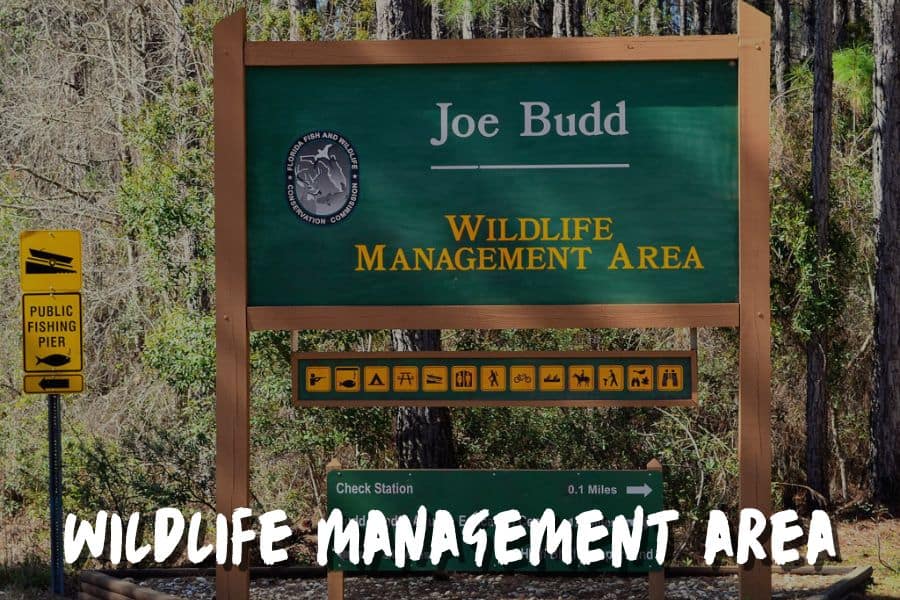
When it comes to Wildlife Management Areas, these are run at the state level.
Every state enforces its own rules and regulations.
So for instance, you need written authorization for dispersed camping in Virginia’s Wildlife Management Areas.
In Minnesota, you don’t need any special permission. But when it comes to dispersed camping, you’re allowed only 14 days in the summer.
The best way to make sure you’re acting upon rules and regulations in a specific area is to check with the local authorities responsible for that area.
National Grasslands
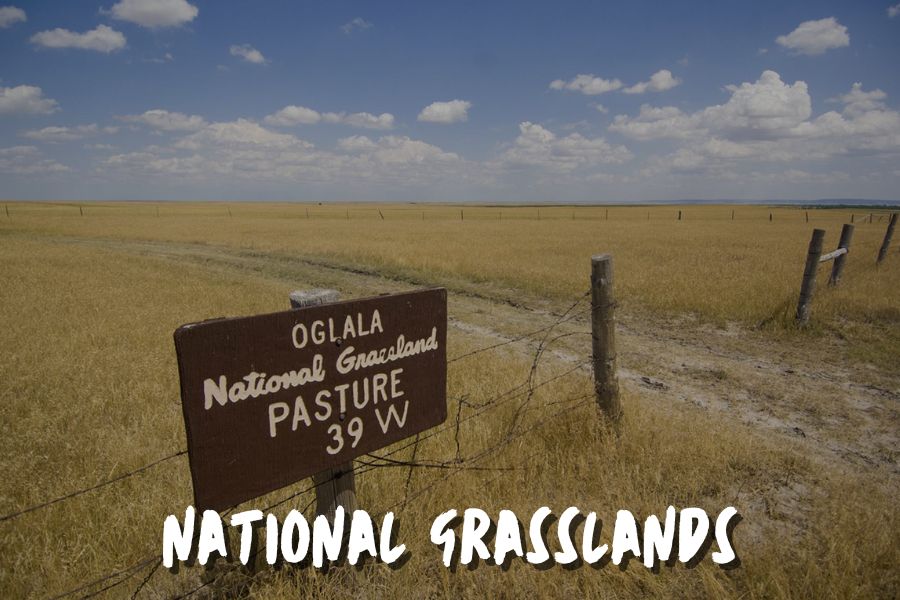
National grasslands are areas of protected and managed federal lands in the US, just like national forests.
In fact, the only difference between them is that grasslands consist primarily of prairies and not, well, woods.
So for administrative purposes, the two are considered separate.
But when it comes to rules and regulations, especially regarding dispersed camping, everything is pretty much the same for national grasslands as it is for forests.
In other words, you need to camp away from developed areas, as well as water sources.
Furthermore, you can only stay up to 16 days at any location, after which you’ll need to move your campsite.
Dispersed Camping Rules and Regulations
As you can see, dispersed camping is still subject to certain rules and regulations.
Now, those rules can differ depending on the location of your choice. And in that case, I strongly recommend checking with the local authorities to make sure you’re sticking to them.
But, there are several rules and regulations that need to be adhered to. These include:
- You need to be self-contained when camping in a dispersed area.
- You can camp for 14-16 days in a specific area before moving to another.
- The campsite must be set at least 100 feet away from any water source.
- You need to remove all camping equipment or personal items when vacating the site.
- You must not camp within 100 feet of the base of any cliff, or the back of any rock shelter.
- Dispersed camping usually has no fees, but it may require a special permit from authorities.
- Special restrictions can be in place during a specific time of the year. Fire bans are often applied during hotter months of the year.
- When camping in bear country, you need to use bear-proof containers for storing food.
- All pets need to be restrained at all times when camping.
Of course, there are other rules regarding dispersed camping, but they’re regarding specific areas, so we won’t address them here.
You should learn about any possible regulations in place regarding your planned area for dispersed camping before hitting the road.
Also Read: Camping Etiquette: Understanding the Rules of Camping for a Positive Outdoor Experience
Tips For Dispersed Camping
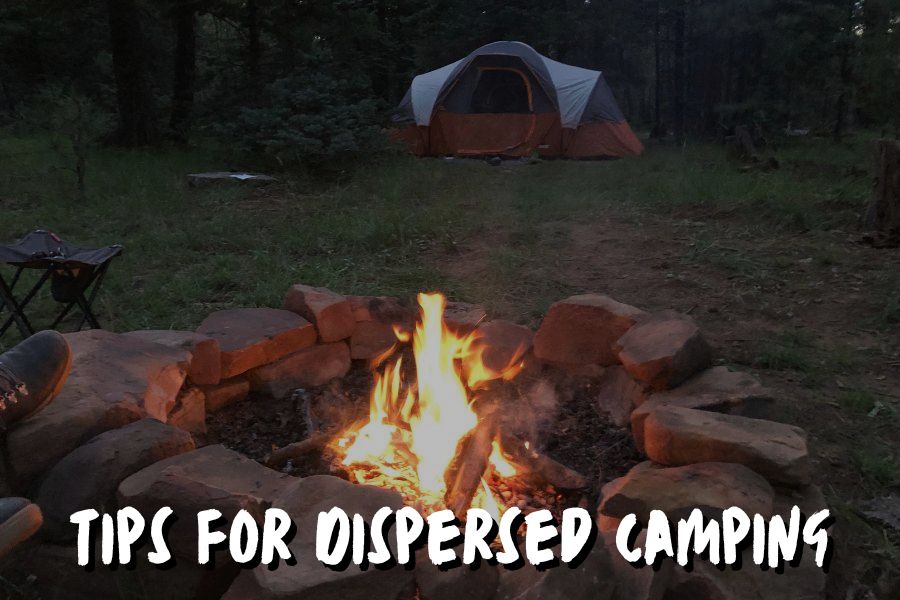
Camping in a dispersed area for the first time may sound scary because you don’t know what to expect.
Even worse – you may not know what’s expected from you.
Well, let’s put that behind us. In this section, we’ll discuss a few things you need to know before heading out.
Also Read: 7 Tips For Stress Free Long Term Camping.
Leave No Trace While Dispersed Camping
Leave No Trace principles should be everyone’s guideline for enjoying the outdoors.
The basis for the principles is simple – you want to leave nature as you found it.
If everyone sticks to that, then everyone gets to enjoy the beauty of the outdoors untouched by human hands.
I’m sure we can all agree that seeing chocolate wraps and trampled shrubs isn’t the sight we expect to see when camping in a dispersed area.
So, what are those principles, you may ask? There are seven of them, and they’re pretty straightforward:
- Plan Ahead and Prepare
- Be Considerate of Others
- Respect Farm Animals and Wildlife
- Travel and Camp on Durable Ground
- Leave What You Find
- Dispose of Waste Properly
- Minimize the Effects of Fire
We actually already covered some of them throughout the article.
In this section, we’ll focus even more on those that are especially important in this case.
Dispose of Waste Properly
It goes without saying that you shouldn’t leave trash behind. That’s true even when you’re camping at a designated campground.
However, having trash cans around does make your job way easier.
Dispersed camping areas, on the other hand, don’t have designated places for disposing of your waste.
This means you’ll have to pack your trash and get rid of it once you arrive in civilization and reach a place with actual garbage cans or trash collection services.
Now, what about your number two, you might ask?
Well, you don’t actually have to bring that along. To dispose of it, you can dig a cathole that’s at least six inches deep and bury it.
Of course, this needs to be done at least 100 feet away from any water source.
Otherwise, microorganisms found in your human waste could find their way into the water, contaminating it.
Minimize Campfire Impacts
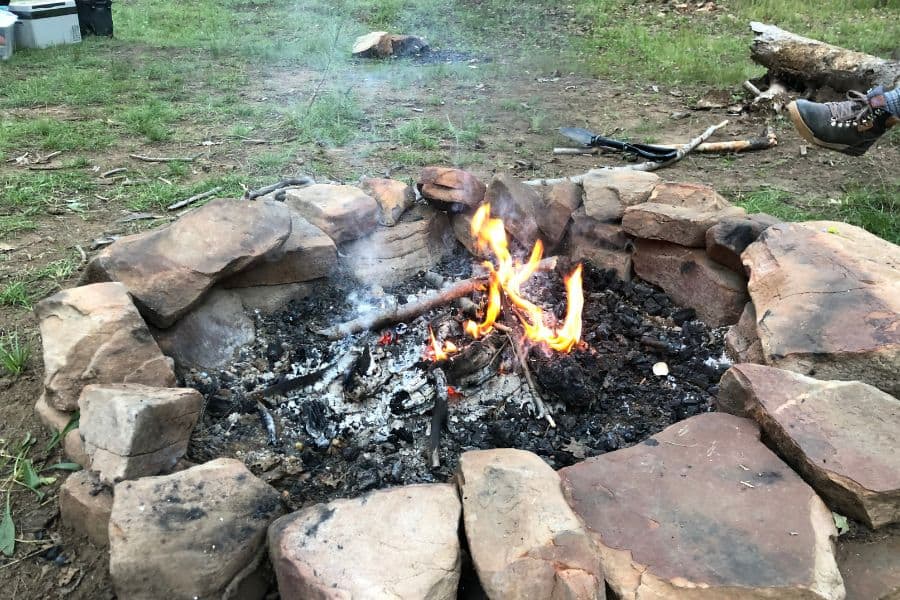
You’d be surprised how quickly a single spark can turn into a destructive wildfire.
And when you’re camping in a dispersed area, putting out a wildfire is around 100 times harder.
Not only don’t have unlimited access to water, but in most cases, firefighters can only reach the area by air.
Now, I’m sure you don’t want to be responsible for setting a wildfire and destroying the forest.
So be sure to check all campfire restrictions in advance, and if there aren’t any be sure to use preexisting campfire rings only.
Speaking of which, if you plan on using wood as fuel, don’t bring it from home.
No firewood should be moved more than 50 miles, as there’s a risk of it being infected by certain endemic diseases.
By moving it to a distant location, you risk infesting the area as well.
If you do decide on making a campfire, find a spot other campers used before for the same purpose.
That way, you don’t need to scar the land just for the sake of enjoying a warm fire.
When putting the fire out, make sure the wood burns down completely.
You want to use the water, NOT dirt to extinguish it. That’s the only way you can be sure it was completely put down and won’t set ablaze again with the breeze.
Finally, scatter the unused wood around the area to make it look as natural as possible.
For many birds, critters, and insects, those fallen branches provide shelter.
Also See: Campfire Alternatives (Camping Without Fire)
Travel & Camp on Durable Surfaces
You might be compelled to go where no one has been before. I admit, it does sound “special.”
But you should try to travel and set up a camp only on durable surfaces.
And in most cases, that means a part of the soil that has already been trampled down from use.
Most of the time, you can clearly see where others have camped out before, and even though you might be in a national forest or other public lands, they are still regularly being used by other campers.
If possible, you want your campsite not only to be trampled down but with as little vegetation as possible.
Why? Well because even walking over grass and plans damages them. And we’re on their territory, not the other way around.
Leave What You Find
Do you like souvenirs? Well, keep that hobby for traveling. The thing is, you don’t really want to collect any “cool stuff” you find when you’re out in the wilderness.
By this, I mean not even nice rocks, pine cones, or tree leaves.
I know that picking up a single flower doesn’t seem like it would make a big difference.
But imagine if every camper that passed by has plucked one. Very soon, those actions could hurt the vegetation in that specific area.
Instead of removing anything from the land, why not take a photo instead?
That could still work as a “memory” from your trip, and you’re not damaging the environment.
The same goes for edible plants. Even if you must try (which I totally understand), limit yourself to a single fruit.
Be considerate to others who would want to enjoy it as well – including wildlife.
In most cases, you’ll probably have to clean up your campsite a bit to set up the tent and other things.
So if you’re moving any boulders or rocks around, make sure to put them back where you’ve found them.
Finally, never cut down trees or their branches.
Even if you need firewood, there’s plenty of dead and dry wood laying around. Green branches don’t create a nice fire anyway.
Respect Wildlife
Being surrounded by wildlife is surely exciting, but please, stay as far as possible.
While some animals may not be affected by human presence, most of them aren’t too fond of it.
And while some may flee, others might be more aggressive. Regardless, you don’t want either to happen.
However, given how wildlife can be quite unpredictable, it’s simply best to keep your distance and enjoy animals from afar.
When camping, try being as quiet as possible. I don’t mean necessarily whispering 100% of the time, but avoid creating an unnatural environment for the animals.
Even if they’re not scared of you, you shouldn’t approach wildlife.
No matter how cute the animals might be, they could carry certain diseases that are very harmful to humans.
Let’s just say that rabies still exists in the woods.
Even if you encounter a sick or wounded animal, keep your distance.
Instead of trying to help, notify the land ranger for the area, and they will come and help them in the best way possible.
Be Considerate of Other Visitors

Having fun in the outdoors? Others do too. Keep that in mind when you’re out in the wilderness.
No Loud Music or Parties
For some people, nature, and music go perfectly together. But to others, outdoors mean silence.
If you fall into the first category, keep in mind that not everyone shares your enthusiasm.
And if you want to enjoy some nice music when you’re in nature, that’s great. But choose headphones instead of a loud stereo.
Frankly, for most of us, there is nothing worse than being out in the middle of the forest, only to hear blasting music and a loud party.
Dogs
If you’re camping with your dog, make sure they’re on a leash and not disturbing other campers.
My dog is very extroverted and bubbly and adores meeting new people.
But many campers and hikers don’t share the enthusiasm.
That’s why I make sure he’s always at my side and not coming up to anyone unless they invite him to.
Trail Etiquette
When walking on a narrow trail, it’s also worth noting that stepping aside for uphill travelers to pass is good hiking etiquette.
Going uphill is already hard as it is, so why make it harder by forcing them to wait for you to pass?
Protect Your Food From Wildlife
Your delicious food can be very dangerous to wildlife – even though your pets at home may enjoy it.
It makes sense, given that our pets have been exposed to humans during their life (at least some of them).
But wildlife feeds on completely different things, so eating human food can be tough on their stomach.
But that’s not the only problem here. By letting them eat your food, you’re also training those animals to enjoy human food.
And at some point, animals may start approaching humans and even become aggressive toward them when not fed.
To avoid that from happening, store your food in proper containers that keep the scent inside.
Most of the time, this means keeping all of your food in the car, and not anywhere near your tent.
Make sure to pack your trash as well, because that will also attract wildlife.
Watch the Weather
I know, the weather can be quite unpredictive sometimes. Especially if you’re checking it months in advance.
But it should go without saying to check the weather forecast a few days prior to your leaving.
This is especially important if you plan on camping in a mountain area, as the weather up there can change fast.
With all that being said, you can never be too prepared. So pack your rain gear just in case.
Having extra guylines and stakes is never a bad idea, as they allow you to further anchor the tent during the wind.
Pick a Safe Dispersed Campsite
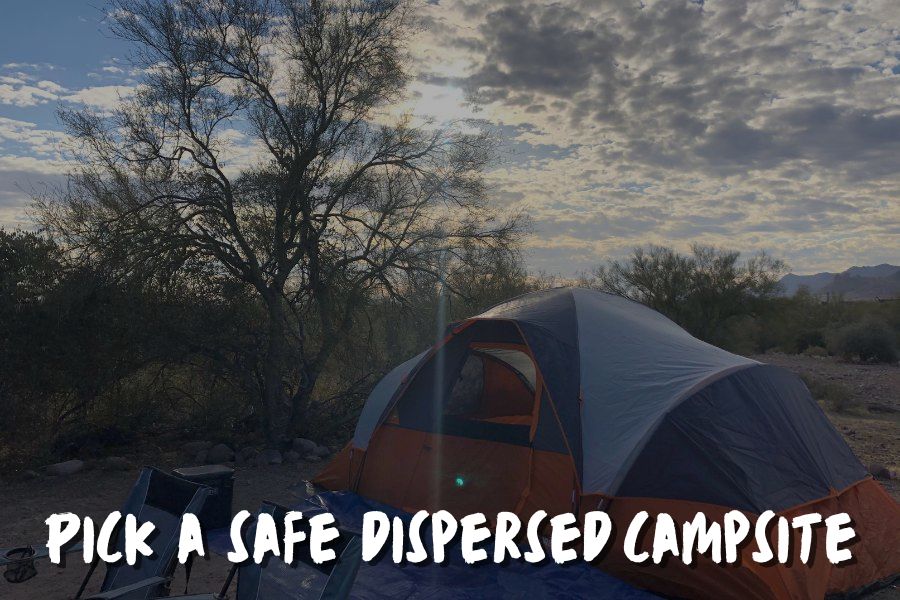
Now, this one does sound pretty obvious. But are you actually paying enough attention to your surroundings?
If you’re camping near trees, make sure there are no dead branches that could fall off if the weather becomes windy.
You should also avoid lone trees and mountaintops, as that’s where the lightning would probably hit during the storm.
You don’t want to be near a water source either.
As you already know, you need to be at least 100 feet away from it to prevent contaminating the water.
But staying away also means you don’t have to worry about potential flooding during the rain.
Advantages of Dispersed Camping
Now that you have all the info, black on white, let’s see what dispersed camping brings to the table.
When it comes to advantages, the best things about dispersed camping include:
- No crowds
- Unspoiled views
- Quietness
- Affordability
- Mental and physical rewards
- Little planning required
Disadvantages of Dispersed Camping
With that being said, there are some disadvantages to dispersed camping that need to be mentioned. These are:
- No bathroom facilities
- Carrying gear to the campsite
- Bad or sometimes no phone reception
- Carrying trash with you long distance
- Limit to camping for up to 2 weeks at the same spot
FAQs
Where Can You Find Dispersed Campsites?
You can camp in any dispersed area that’s away from a designated campground in National Forests and National Grasslands, and from BLM to WMA territories, you have plenty of options to choose from.
When is dispersed camping legal?
Dispersed camping is generally legal, as long as you follow a few rules.
First, you need to be at least 100 feet away from water sources and a mile away from any campground.
You also need to be away from the road, but still within a 150 feet radius from it.
What is the difference between primitive and dispersed camping?
There’s no real difference between these two terms. Both of them indicate a type of camping with little to no camping services available.
It’s just that the latter term has been more popularized since it’s used by National Forest and BLM offices to distinguish dispersed and campground camping.
How do you shower when dispersed camping?
While more difficult, showering when dispersed camping isn’t impossible.
You’ll want to get a portable camp shower. However, you’ll need to be very conservative with your water.
For washing, you should only use biodegradable soap, as other products can harm the soil, plants, and wildlife.
How do you use bathroom dispersed camping?
You can either pack your stuff into a bag or bury it in a cat hole. In the case of the latter, you need to dig a hole six inches deep and at least 100 feet away from water, to prevent any contamination.
To Sum Things Up
As you can see, dispersed camping comes with additional responsibilities.
You need to be considerate of nature, wildlife, AND other nearby campers.
However, that’s not as difficult as it sounds. As long as you know what rules and regulations you need to obey, there shouldn’t be any problems and you can enjoy your trip to the fullest.


